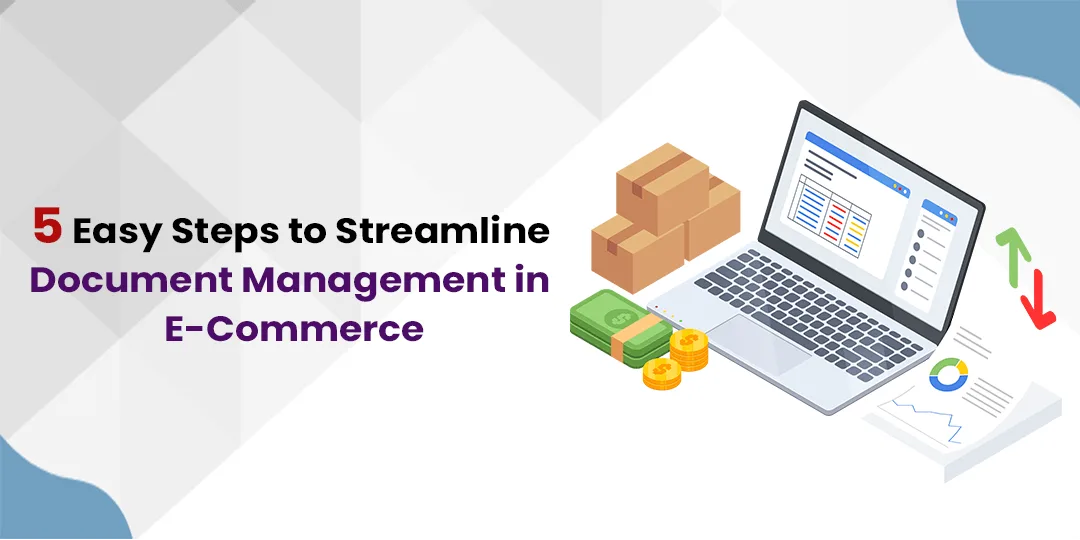The success of things like quick transactions and impeccable customer service in e-commerce operations can depend on how streamlined your document workflows are.
So, let’s get straight to it and look at five easy steps to streamline document management.
Step One: Evaluate Your Current Document Management
Initiating efficiency begins with understanding the territory. In the bustling world of e-commerce, documents are both the map and the journey. So, begin by scrutinizing your current processes for managing various document types, such as:
- Contracts: Are they easily editable for negotiation changes?
- Invoices: How swift is their journey from creation to client inbox?
- Purchase orders: Do they integrate smoothly with inventory systems?
- Shipping and tracking documents: Can they be generated and shared with a click?
Catalog these documents’ lifecycle stages: acquisition, processing, and archiving. Look for patterns in hold-ups that tell a tale of time lost. Perhaps invoices stagnate before being sent out or contracts take detours getting approved, for example.
Pinpointing inefficiencies allows you to set targeted goals for improvement.
Step Two: Use a Good PDF Editor
With the terrain mapped, your next move is to arm yourself with the right tools.
A dynamic PDF editor is akin to a Swiss Army knife for document management in the digital marketplace. With it, you can easily do things like:
- Merge order confirmations and invoices into one document for easy tracking.
- Compress high-resolution contracts without losing clarity, for quicker uploads.
- Split bulky catalogs into individual product PDFs for swift updates – as long as you choose the Best Tool to Split your PDF.
This step isn’t just about choosing any PDF tool; it’s about selecting one that fits like a glove. Find a tool that integrates seamlessly with your existing platforms, amplifying its utility manifold.
Step Three: Create a Centralized Document Repository
Once the right PDF editor is in play, think about storage. Efficiency demands swift access to documents at a moment’s notice—enter the centralized document repository.
Imagine this:
- A single source for all documents, from customer receipts to supplier agreements.
- Quick search capabilities that transform minutes into moments.
- Access controls that ensure only authorized eyes peruse sensitive information.
This step is more than mere organization—it’s about creating a hub where documents don’t just live but are readily available for action.
Choose a cloud-based service that offers robust security and redundancy. Integrating this with your PDF editor ensures not just safekeeping, but continuous flow in your document lifecycle—a central vein connecting the heart of your operations to every transactional limb.
Step Four: Automate Document Workflows
With a centralized hub in place, it’s time to turn the manual cogs of your document management into automated gears. Automation is about consistency, speed, and the kind of reliability that turns first-time buyers into loyal customers.
Consider these action points:
- Automated invoice generation upon order fulfillment.
- Instant contract creation with pre-set templates for new vendors.
- Real-time stock level updates tied to purchase orders.
Implementing automation requires careful planning, so map out each step where human intervention currently occurs and identify where software can take the wheel.
Look for a solution that can be tailored to your unique business rules, ensuring a seamless transition from human to machine.
The right automation tools will reduce errors, free up valuable staff time, and keep your e-commerce engine humming smoothly.
Step Five: Regularly Review and Optimize
Adopting new tools and strategies is just the beginning. The true course to document management mastery is paved with continuous improvement.
Here’s your action plan:
- Schedule routine audits of your document workflow efficiency.
- Gather feedback from staff on the front end of document interaction.
- Monitor metrics for document access times, error rates, and customer response times.
This iterative process allows you to tweak and hone your systems where necessary. Perhaps that dynamic PDF editor has a new feature to explore, or maybe the centralized repository can be restructured for even faster searches. It’s a cycle that feeds back into itself—a self-improving loop.
Make review and optimization an ingrained habit; it’s this perpetual motion towards refinement that keeps you at the forefront of e-commerce operations.
Conclusion
In conclusion, streamlining document management in e-commerce is a journey of measured steps—from assessing your current state to embracing continual optimization.
By following the above five-step process, you will lay the groundwork for faster transactions and unmatched customer service.





